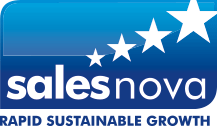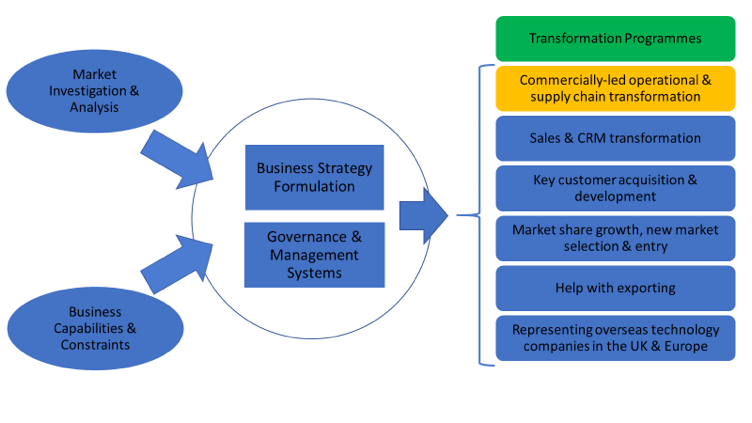Commercially-Led Operational and Supply Chain Transformation

Commercially-Led Operational
& Supply Chain Transformation
Commercially-Led Operational & Supply Chain Transformation
With a clear strategy for its markets and customers, the operations and supply chain of an organisation can be optimised for profit, working capital and customer satisfaction.
Sales Nova’s approach is to diagnose the areas below to identify priorities, then lead a transformation programme deploying the projects that can be delivered within available resource capacity:
- Product Management:
- Using Runner/Repeater/Alien/Stranger analysis of products together with A/B/C analysis of customers to identify the core products that drive profit contribution & align with core business capabilities;
- Focusing in on products with low market demand, low profit contribution, use of slow-moving inventory, or causing disruption to mainstream production flow and that are mainly purchased by B/C customers. Sensitively managing & working with key customers so as not to jeopardise business:
- Seeking to remove from sale where they are not critical to the retention of significant customers or wider market demand;
- Seeking to re-engineer to improve flow & profitability and use fast turning inventory, where they are market-critical or where price & sales volume can be increased; and
- Removing unwanted / unnecessary product options & accessories, especially if they are always supplied in the package and discarded.
- Creating / updating Bills of Material & Routings to ensure accuracy of costings for pricing, and production instructions for manufacture;
- Implementing or optimising an ERP / MRP system, in conjunction with finance, operations & sales, to drive improved business-wide performance;
- Production & Service Planning:
- Implement SIOP (Sales, Inventory, Operations Planning) using improved sales forecasts and finished goods stock requirements to create a stable planning environment for production planning & supply chain demand forecasting. Sales Nova interim executives are used to coaching sales & operations managers in this process.
- Ensuring robust event calendars and review meetings for production & service planning, schedule adherence, customer lead time, and the communication of changed delivery dates & requirements to & from customers.
- Optimising factory material flow, layout & labour planning once the product range & inventory has been optimised, with the aim of improving customer delivery and improving efficiency;
- Exploring advanced lean business improvement & automation projects.
- Supply Chains:
- Seek supplier input to value engineering & product engineering, seeking to reduce the variety of inventory, remove the need for slow moving inventory, reduce cost & improve quality.
- Seek to consolidate suppliers whilst ensuring mitigation of supply chain risk by avoiding single point risks, re-tendering to achieve best value across quality/cost/delivery;
- Seek to reduce inventory and increase turn, moving to pull-signal & supplier-managed inventory such as Kan Ban with appropriate audit controls, and ensuring supply risk is mitigated to avoid interruption to production;
- Seek to reduce purchasing transactional activity through consolidated supplier invoicing (and supplier consolidation), freeing up time for improvement activity.
- Transaction Processing: Analyse transactional activity across all areas seeking to:
- identify and address detractors that interrupt the flow and speed of transaction processing;
- move to paperless flow using electronic forms within business ICT systems;
- eliminate batching and queuing where non-electronic media are used, to get as close as possible to single-piece flow;
- optimise ICT systems for reliability & integration, often removing ageing server infrastructure and replacing it with resilient, cloud-based “thin client” ICT; and
- review transaction processing resource requirements once transactional processes have been optimised, ensuring appropriate control and segregation of duties is maintained.
- Finance:
- Working with sales & purchasing to bring debtors to terms, increase creditor terms, and to reduce inventories whilst mitigating business risk from stock levels.
- Reviewing overheads, budget ownership and cost reduction targets;
- Identifying cost reduction projects e.g. Move to LED Lighting.
Turnaround &
Market Share Growth
Market Share Growth
Sales, CRM & Key Account
Transformation and Growth
Transformation and Growth
Export Market
Development
Development


